
views
Choosing the Shade and Preparing Your Hair

Choose a hair dye that is 1 to 2 shades darker than your current color. If you go too dark, your hair will look stark, streaky, and unnatural. The darker pieces of hair might overshadow the gray hair and make it look as though your hair is currently graying. A couple of shades darker will definitely give you more subtle results. If your hair is more of a brownish-gray, stick with dark-brown. If you have dark-gray hair, consider going with black lowlights. This will make your natural gray hair look more like highlights.
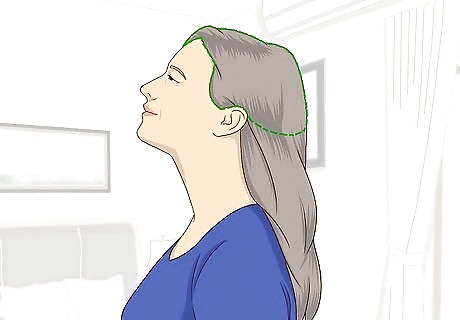
Decide on the placement of the lowlights. You can apply the lowlights all over your hair, or just focus on the top part. You can even leave a few strands at the front of your face lighter; this will help frame your face better.
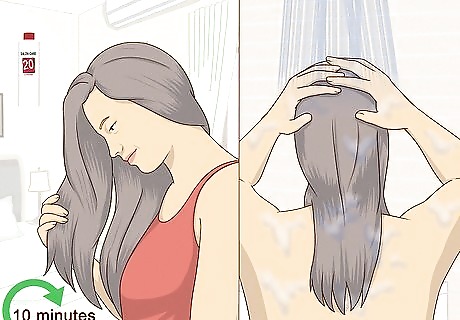
Pretreat your hair with 20 volume hair developer, if needed. If your hair is very coarse, it may not take permanent colors very well. Purchase some volume 20 developer from a beauty supply store, then do the following: Apply the developer to your dry, unwashed hair. Wait 10 minutes. Rinse the developer out. Dry your hair, preferably with a towel.

Protect your clothes and your work station. Cover your counter with newspaper and drape a hair dyeing cape over your shoulders. If you can't find one, use an old towel instead. You will also want to put on a pair of plastic gloves to keep your hands clean.

Cut the aluminum foil. You will need to cut the foil down to about 4 inches (10.16 centimeters) wide and twice the length of your hair. Fold the top, narrow edge down of each piece by about ½ inch (1.17 centimeters). This will keep the foil from scraping against your scalp.

Mix your dye in a bowl or a bottle. You will need to mix together both the dye and the developer. Do this in a bowl or in a bottle, if your dye isn’t too thick. You’ll need to shake the bottle well to mix up the two and make sure that you get a nice mixed consistency. Have a hair dye brush ready to use.
Applying the Lowlights

Clip the top part of your hair out of the way. Use the handle of a rat-tail comb to separate the top part of your hair from the bottom. How thick you leave the bottom layer depends on how many lowlights you want and where you want them to start.

Grab a thin section of hair and weave a comb through it. Use a foiling comb with a metal tail for the easiest method, or use a regular rat-tail comb. Take a thin, 2-inch (5.08-centimeter) wide section from the bottom layer. Push the handle of your comb through it, weaving it up and down. Keep the comb close to your scalp.

Separate the woven hair and slip an aluminum foil rectangle under it. Pull the comb upward just enough to separate the top layer of your section from the bottom. Take a piece of your prepared foil, and slide it between the two layers of hair. Tuck it against your scalp. The hair should only be covering half of the foil; move it off to the side, if needed.
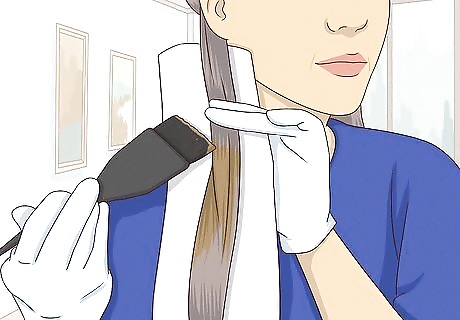
Brush the hair dye onto the hair covering the aluminum foil. Remove the rat-tail comb, allowing the hair to fall against the foil. Use a hair dye brush to apply your chosen dye to the hair.
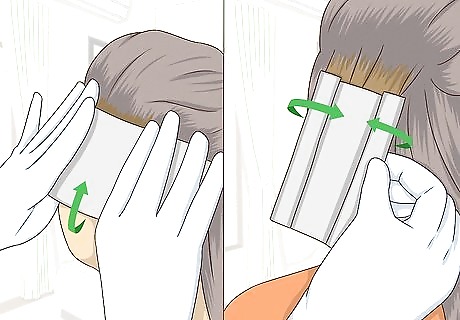
Cover the dyed hair with the rest of the foil piece. Fold the bottom part of the foil over the dyed hair first. Next, fold the side edge of the foil over the hair as well, covering it the rest of the way.
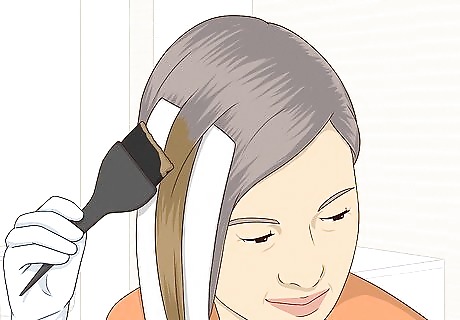
Continue to dye your hair in a similar manner. You can add as many or as few lowlights as you want to. If you already have highlights in your hair, then you should keep the lowlights in the same area.

Wait about 40 minutes before rinsing the dye out. Remove the foil pieces, then rinse your hair with cool water. Wash your hair using a color-safe conditioner next, then dry and style it as you normally would. Some dyes are different. If your dye has a different processing time, use that instead. Gray hair specifically may also have a different processing time. Call a hair stylist and tell them the brand of your hair dye to get an exact answer for how long you should let your dye soak in.
Styling and Maintaining Your Hair
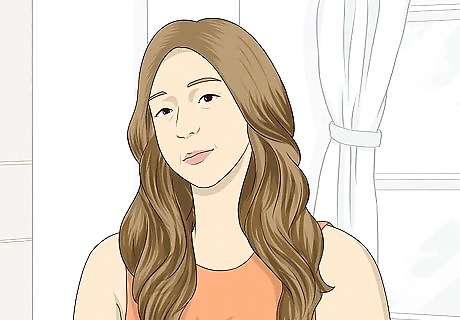
Add some highlights in addition to the lowlights, if needed. If your hair isn't all gray and is still clinging to its natural color, you may want to add some highlights to it as well. This will help brighten up your hair. Apply the highlights the same way as you did the lowlights. Here are some suggestions based on common natural hair colors: Blond: apply both highlights and lowlights ranging from pearl to medium blonde. Brown: add some darker browns, such as espresso, but skip the highlights. Red: apply both highlights and lowlights in browns and blonds.
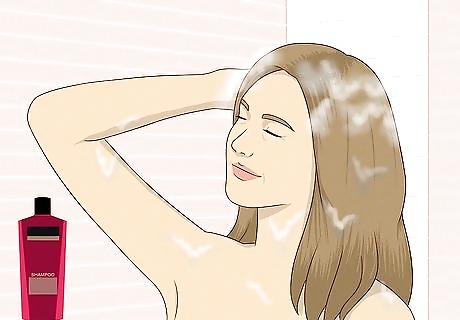
Wash your hair with color-safe shampoo and conditioner. This will not only keep the color from fading, but also help nourish your hair and prevent it from becoming too dry.

Use a hydrating hair mask once or twice a week. Try to find one that is safe for colored hair. Apply the mask right after you finish shampooing your hair. Wait 3 to 4 minutes, then wash it out. Dry and style your hair as usual; skip the conditioner.

Limit the heat styling. Your hair is already going to be brittle and dry, and the coloring will only make it worse. Instead, embrace your natural hair texture, or use styling methods that don't require any heat (like pin curls). If you need to heat style your hair, apply a heat protectant.
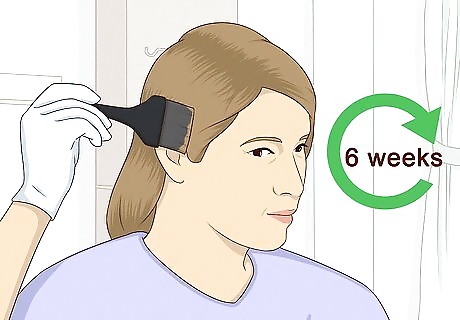
Apply touch-ups every 6 weeks, or as needed. Hair grows about half an inch (1.3 cm) per month, so this should be a good time frame to touch up. Depending on how fast your hair grows and how well you do your dye job, though, you might be able to go longer.














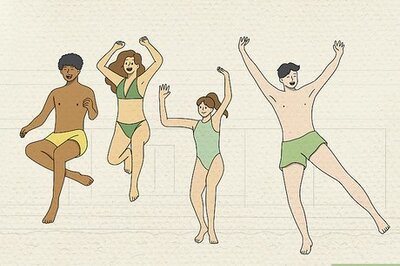


Comments
0 comment